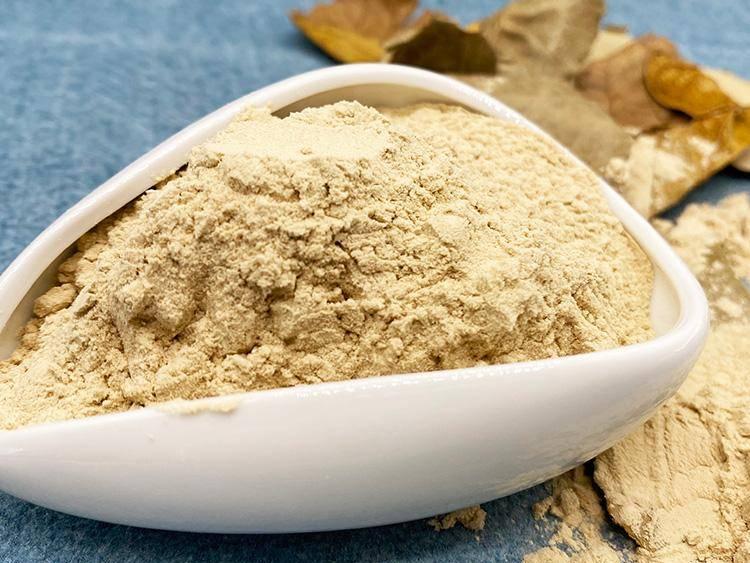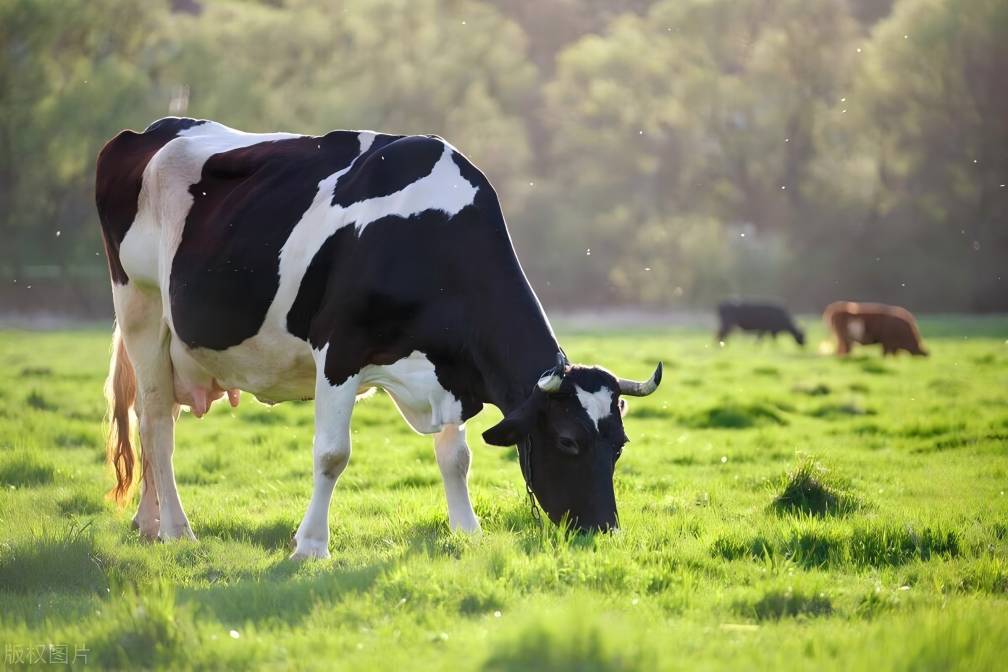Is Beta Glucan Good for You?
Dextran is the most common type of polymeric polysaccharide chain in nature, which is formed by the polymerization of glucose monomers. It uses D-glucose pyranose as its basic unit, and its structure is diverse. There are three types of glycosidic bonds: (1→3), (1→4) and (1→6). It is divided into α and β types [1-2]. α-Dextran has a ribbon-like single-chain structure, extending along the fiber axis and is basically not biologically active. Representative substances are starch, which provides the body with its main energy source. Beta-glucan is a polymer formed by the enzymatic catalysis of the synthetic precursor uridine diphosphate glucose [3-4].
In recent years, beta-glucan has become a research hotspot in the food industry due to its excellent physical and chemical properties. In particular, with the application of new research techniques such as isolation and purification, structural identification, and functional characterization, the special physiological activity and medicinal value of beta-glucan have also been continuously discovered. This paper introduces the current research status of β-glucan in terms of its biological functions in recent years, focusing on its regulatory effects on blood glucose and lipids, immunity, nerve development and intestinal function, etc., providing theoretical reference for the further development and utilization of β-glucan.
1. Sources and structure-activity relationships of β-glucan
β-glucan is widely available and can be obtained from a variety of natural plants such as seaweed, wheat, oats, barley, and microorganisms such as yeast, alkaligenes, and edible fungi [5]. β-glucan from different sources differs in terms of glycosidic bond type, molecular structure, and branching position (see Table 1). Plant-derived β-glucans mainly have β-(1→3) and β-(1→4) glycosidic bonds. The glucose residues in the molecules of cereal β-glucans are linked by β-(1→4) glycosidic bonds, often separated by a single β-(1→3) glycosidic bond, forming fiber trisaccharides (DP3) and fiber tetrasaccharides (DP4) fragments. The ratio of DP3 and DP4 ratio also becomes an important structural characteristic of cereal β-glucan [6].
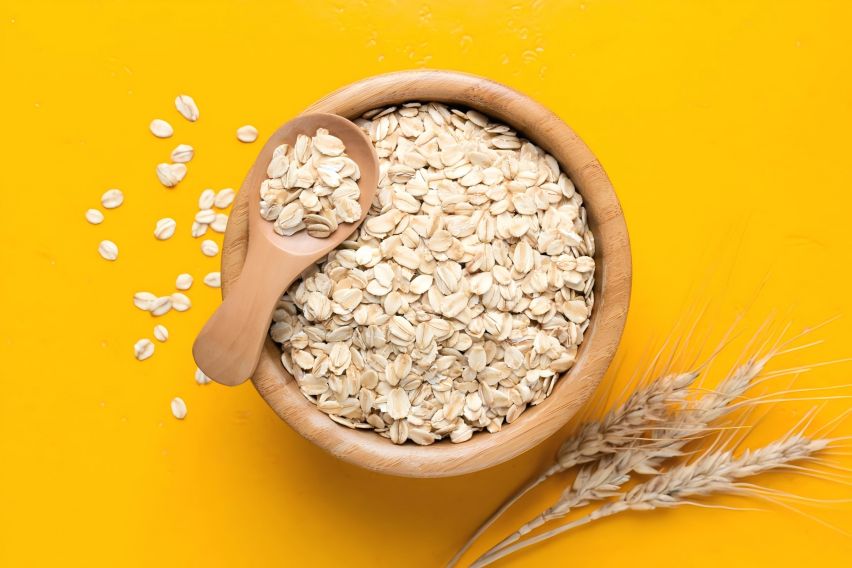
Microbiological β-glucans are often linked by β-(1→3) and β-(1→6) glycosidic bonds [7]. Beta-glucans isolated from fungi such as yeast and Hericium erinaceus generally have similar molecular structures, i.e., a main chain composed of glucose residues linked by β-(1→3) glycosidic bonds and branches formed by β-(1→6) glycosidic bonds. Curdlan from Agrobacterium is a linear β-glucan without branches and composed only of β-(1→3) glycosidic bonds [8]. polysaccharide [8]. The content of glycosidic bonds and degree of polymerization also affect the solubility, molecular weight and other physicochemical properties of β-glucan. The ratio of β-(1→3) to β-(1→4) glycosidic bonds in water-soluble β-glucans is 1: (2.3~2.6), while the corresponding ratio in non-water-soluble β-glucans is about 1:4.2 [9]. The molecular weight of β-glucan is usually distributed between about 103 and 106 kDa, and variety, origin, extraction method and measurement method, and there are certain differences [10].
2. The physiological functions of β-glucan
With the improvement of people's living standards and the popularity of Western-style dietary cultures with high fat and sugar, the incidence of chronic metabolic diseases is constantly rising, and methods of improving body functions through dietary control are receiving increasing attention. In order to promote the construction of a healthy China and improve the health of the people, China's “Healthy China 2030” Outline proposed in 2016 pointed out that nutritional intervention should be used to gradually solve the problem of undernutrition and overnutrition coexisting in some people. Studies have shown that β-glucan can play a key role in improving health and preventing chronic non-communicable diseases (such as diabetes, hypercholesterolemia, obesity, cancer and neurodegenerative diseases) [27]. The US Food and Drug Administration approved β-glucan as a safe food additive in 2007 [28], and currently 45 countries, including China, Japan, the United States, and Australia, have approved its use [10]. Research on the correlation between the molecular properties of β-glucan and precision nutrition and the development of functional foods have become a hot topic in the fields of nutrition and pharmacology in various countries .
2.1 Research on the role of β-glucan in regulating blood sugar
The type and strength of the physiological functions of β-glucan are usually attributed to its molecular structure (composition of the main side chain, three-dimensional conformation, molecular weight, etc.) and physicochemical properties (solubility, water retention, swelling, viscosity, fermentability, etc.) [29]. A large number of studies have shown that β-glucan has a good hypoglycemic effect. The potential mechanism may be as follows: interference with the body's absorption of dietary nutrients: the interaction of β-glucan with water molecules increases the viscosity of the solution and the thickness of the water layer on the intestinal mucosal surface, reducing the speed of chyme passing through the small intestine and slowing down the binding of nutrients (such as sugars, amino acids, etc.) to digestive enzyme substrates [29-31]; in addition, β-glucan also adsorbs calcium, plasma and organic matter, thereby affecting the metabolic level of these substances. The viscosity and concentration of β-glucan are closely related to its relative molecular weight. The higher the viscosity (the higher the molecular weight), the greater the potential to lower blood sugar [32]. Wood et al. found that β-glucan with a molecular weight between 1 × 105 and 8 × 105 has a stronger effect on blood sugar regulation [33].

Beta-glucan can also reduce blood glucose by protecting pancreatic beta cells and inhibiting enzymes related to glucose metabolism [34]. Shen et al. found that oat beta-glucan regulates glucose and lipid metabolism by increasing the secretion of insulin and glucagon-like peptide-1, reducing insulin resistance in diabetic mice [35]. Liu et al. found that oat beta-glucan repairs and improves the integrity of pancreatic beta cells and tissue structure integrity, protect hepatic glucose metabolism, and improve glucose tolerance in mice with type 2 diabetes [36]. In addition, studies by Yokoyama et al. and Juorch et al. have shown that β-glucan can significantly reduce postprandial blood glucose and insulin levels in healthy people [37-38]. Zheng et al. found that the drug Oatrim (containing oat beta-glucan) can effectively reduce postprandial blood glucose concentrations and insulin levels in patients with type I and type II diabetes, which may be related to the inhibition of beta-glucan on the activities of alpha-amylase, alpha-glucosidase and invertase [39-40].
2.2 Research on the role of beta-glucan in regulating lipid metabolism
Since 1963, when Dutch scientists Groot et al. pointed out that β-glucan can effectively reduce cholesterol synthesis in the body, a large number of animal experiments and human clinical studies have confirmed this conclusion [41]. The main effect of β-glucan on cholesterol is that it can significantly reduce total cholesterol and low-density lipoprotein cholesterol in the blood plasma, while having no significant effect on high-density lipoprotein and triglycerides, and also does not affect the proportion of cholesterol in lipoprotein ratio [42].
The relevant mechanism is currently unclear, and there are five hypotheses: (1) β-glucan can bind bile acids and excrete them, thereby promoting the conversion of cholesterol to bile acids and inhibiting the accumulation of cholesterol in the blood [43]; (2) β-glucan can be fermented by intestinal microorganisms to produce short-chain fatty acids (SCFAs), such as acetic acid and butyric acid, which can inhibit the synthesis of cholesterol synthesis in the liver[44]; ③ β-glucan can regulate the activity of enzymes related to cholesterol synthesis and metabolism, such as fatty acids and glycerides, regulate lipid metabolism and cholesterol metabolism, and promote the breakdown of low-density lipoprotein cholesterol[45]; ④ β-glucan forms a highly viscous solution in the small intestine, hindering the emulsifying effect of bile and the reabsorption of bile acids[45]; ⑤ β-glucan can regulate cholesterol metabolism by modulating the macrophage-cholesterol axis[46].
Drozdowski et al. found that high-viscosity β-glucans isolated from oats and waxy barley can reduce intestinal uptake of long-chain fatty acids and cholesterol by downregulating the expression of genes related to fatty acid synthesis and cholesterol metabolism[47]. Wang and Sunberg et al. used β-glucanase to verify that β-glucan is the main functional component that reduces plasma cholesterol and low-density lipoprotein levels reduce in rats and hamsters[48]. Thandapilly et al. found that high-molecular-weight barley β-glucan can increase the excretion of bile acids in the feces and the concentration of total SCFAs in patients with mild hypercholesterolemia[49].
2.3 Research on the immunomodulatory effects of β-glucan
Recent studies have shown that β-glucan powder, as a natural immunomodulator, can bind and activate immune cells to secrete cytokines, participate in the host's specific and non-specific immunity, and thus improve the body's immune function [50-51]. Jin et al. found that oat β-glucan can regulate the immune response, increase serum immunoglobulin in mice, and stimulate the secretion of anti-inflammatory factors, thereby improving the immunity of mice [52]. Y 0-51]. Jin et al. found that oat β-glucan can regulate the immune response, increase the serum immunoglobulin in mice, and stimulate the secretion of anti-inflammatory factors, thereby improving the immunity of mice [52]. Yun et al. found that β-glucan can effectively change the cell number of the mesenteric lymph nodes and Peyer's lymph nodes of mice, and enhance the resistance of mice to infection with Staphylococcus aureus or Escherichia coli [53]. Salah et al. found that β-glucan can regulate the immune-related genes of tilapia to resist infection with Streptococcus fish [54].
Golisch et al. found that fungal β-glucan is internalized by macrophages and binds to neutrophils. The resulting activated granulocytes can kill some tumor cells [2].
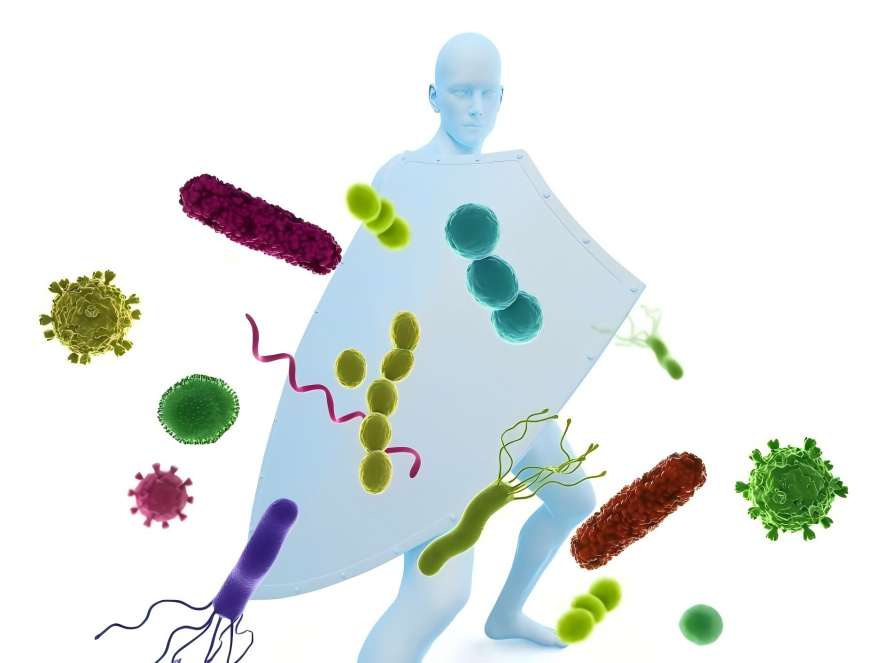
2.4 Research on the effect of β-glucan on improving brain function
A large number of studies have found that dietary fibres such as inulin, oligofructose and their metabolites have potential brain protective effects. Haider et al. showed that β-glucan can alleviate scopolamine-induced cognitive deficits in rats by inhibiting the hydrolysis of acetylcholine in the central nervous system [55]. A high-fat, low-fiber diet causes activation of microglia and synaptic damage in mice, while dietary supplementation with β-glucan can optimize synaptic ultrastructure and related signaling pathways in the brain, reducing neuroinflammation and cognitive decline in obese mice[56-57]. Xu et al. showed that yeast β-glucan improved neuroinflammation and brain insulin resistance in mice with dementia models[58]. Hu et al. demonstrated that long-term supplementation with significantly improved synaptic ultrastructure in the prefrontal cortex and enhanced recognition memory [59]. More importantly, clinical studies have shown that autistic children aged 3 to 18 years who consumed a food supplement containing β-glucan showed significant improvements in their behavior (a significant decrease in the Autism Assessment Scale score) and the expression level of α-synuclein [60].
2.5 Research on the effect of β-glucan on the intestinal microenvironment
The large number of symbiotic bacteria in the human intestine forms a microbial barrier that can resist the invasion of pathogenic bacteria and provide important protection. Changes in the intestinal microbiota also significantly affect the physiological functions of the host [27]. As an important prebiotic, β-glucan can have a positive effect on the microbiota in the stomach and intestines. Due to the lack of β-glucanase in the human body, β-glucan cannot be directly digested by the digestive tract, but can be degraded and absorbed by glycosidases secreted by probiotics in the large intestine. Therefore, β-glucan selectively stimulates the vitality and proliferation of probiotics. At the same time, some probiotics produce lactic acid and other substances in their own metabolism, which lowers the pH of the intestine and inhibits the growth and reproduction of harmful bacteria [61]. On the other hand, SCFAs produced by the catabolism of β-glucan by anaerobic bacteria in the colon provide nutrients for colonic mucosal cells [62] and promote the proliferation of intestinal epithelial cells and intestinal T cells [63]. SCFAs can also inhibit the activity of intestinal cancer-inducing factors such as glucosidase, glucuronosyltransferase and urease, inhibit the conversion of primary bile acids to secondary bile acids, and increase the excretion of secondary bile acid excretion, which has a preventive effect on colon cancer [64-65].
Shen Ruiling et al. found that oat β-glucan can promote the proliferation of bifidobacteria and lactobacilli in the mouse intestine, inhibit the reproduction of Escherichia coli, and improve the intestinal environment [66]. Pieper et al. found that a feed containing β-glucan is beneficial for the proliferation of butyric acid-producing probiotics in the intestines of weaned piglets [67]. Butyric acid can provide energy for intestinal epithelial cells, help maintain the integrity of the intestinal mucosa and inhibit the activity of cancer cells in cell experiments [68]. SCFAs can also increase the thickness of the mucus layer in the colon of rats and maintain the normal function of the intestines [69].
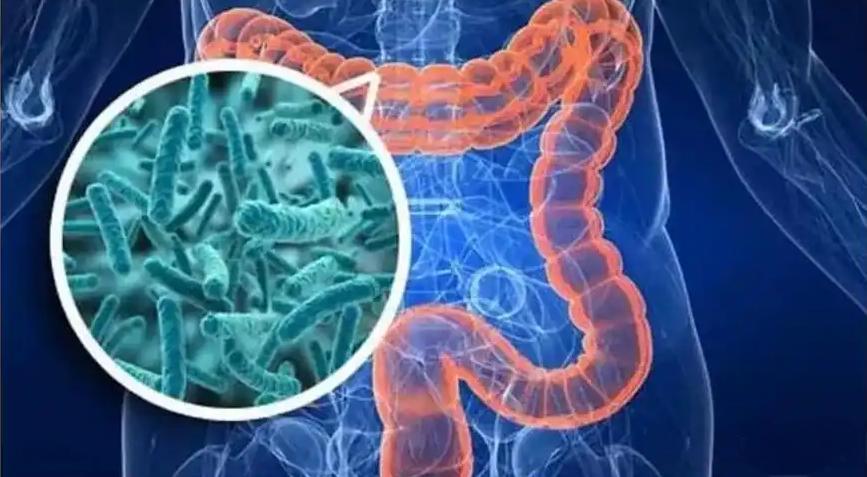
3 Summary
Beta-glucan plays an important role in promoting health and preventing disease. It has a positive effect on controlling postprandial blood glucose and reducing insulin resistance, lowering cholesterol and hyperlipidemia, enhancing the body's immune system and protecting intestinal and brain health, which gives it great potential for development in the health industry, such as functional foods, healthcare, food additives, etc. In recent years, research has focused on the source of β-glucan raw materials, processing methods, molecular size or viscosity, etc., using in vitro and in vivo experiments to characterize the nutritional effects in terms of biochemical indicators and metabolic regulation. However, the research on the various biological activity mechanisms of β-glucan is not yet clear. Future research can combine new technical methods such as metabolomics, genomics and transcriptomics to further explain its nutritional mechanisms and provide more scientific evidence for the development of new health food research and development provide more scientific evidence.
Reference:
[1] NAKASHIMA A, YAMADA K, IWATA O, et al. β-Glucan in foods and its physiological functions[J]. Journal of Nutritional Science and Vitaminology (Tokyo), 2018, 64(1):8-17.
[2] GOLISCH B, LEI Z, TAMURA K, et al. Configured for the human gut microbiota: Molecular mechanisms of dietary β-Glucan utilization[J]. ACS Chemical Biology, 2021, 16(11): 2087-2102.
[3] INGLETT G E, NEWMAN R K. Oat beta-glucan-amylodextrins: Preliminary preparations and biological properties[J]. Plant Foods For Human Nutrition, 1994, 45(1): 53-61.
[4] BEER M U, ARRIGONI E, AMADO R. Extraction of oat gum from oat bran: Effects of process on yield, molecular weight distribution, viscosity and (1→3)(1→4)-β-D-glucan content of the gum[J]. Cereal Chemistry, 1996, 73(1): 58-62.
[5] WANG S Y. Research progress of β-glucan in Oat[J]. Science and Technology of Cereals, Oils and Foods, 2004(6): 47-48.
[6] LIU Y F, ZHAO A J. Research progress of molecular structures,physical properties and applications of cereal β-D-glucans[J].Food Industry, 2017, 38(2): 253-256.
[7]DU B, MEENU M, LIU H Z et al. A concise review on the molecular structure and function relationship of β-glucan[J].International Journal of Molecular Sciences, 2019, 20(16): 4032.
[8]WAN Y J, XU X J, GILBERT R G, et al. A review on the structure and anti-diabetic (type 2) functions of β-glucans[J].Foods, 2022, 11(57): 57.
[9]GAJDOSOVA A, PETRULAKOVA Z, HAVRLENTOVA M, et al. The content of water-soluble and water-insoluble β-d-glucans in selected oats and barley varieties[J]. Carbohydrate Polymers, 2007, 70(1): 46-52.
[10]ZHANG H, CAI Q S. Research progress of β -glucan in cereals[J]. Cereals & Oils, 2010(5): 7-11.
[11 ]YAO H Y Y. Isolation, purification and structural characterization of β-glucan and arabinoxylan from highland barley[D]. Nanchang University, 2016.
[12]ZHANG H, ZHANG N, XIONG Z Q, et al. Structural characterization and rheological properties of β-D-glucan from hull-less barley (Hordeum vulgare L. var. nudum Hook. f.)[J]. Phytochemistry, 2018, 155:155-163.
[13]HUANG Z H. Study on the effect of thermally induced infiltration of barley β-glucan microgel on wheat protein aggregation and the application[D]. Jiangnan University, 2019.
[14] XIAO X, TAN C, SUN X, et al. Effects of fermentation on structural characteristics and in vitro physiological activities of barley β-glucan[J]. Carbohydrate Polymers, 2020, 231: 115685.
[15] HUANG Z H, ZHU K X, ZHOU H M. Research progress in gel properties and application of barley β-glucan[J]. Journal of Food Science and Technology, 2017, 35(5): 25-31 .
[16] RYU J H, LEE S Y, YOU S G, et al. Effects of barley and oat β-glucan structures on their rheological and thermal characteristics[J]. Carbohydrate Polymers, 2012, 89(4): 1238-1243.
[17] AHMAD A, ANJUM F M, ZAHOOR T, et al. Extraction and characterization of beta-D-glucan from oat for industrial utilization[J]. International Journal of Biological Macromolecules, 2010, 46(3): 304-309.
[18] YU S J, WANG J, LI Y X, et al. Structural studies of water-insoluble β-glucan from oat bran and its effect on improving lipid metabolism in mice fed high-fat diet[J]. Nutrients, 2021, 13(9): 3254.
[19] SCHMIDT M. Cereal beta-glucans: An underutilized health endorsing food ingredient[J]. Critical Review in Food Science and Nutrition, 2022, 62(12): 3281-3300.
[20] WOOD P J. Review: Oat and rye β-glucan: Properties and function[J]. Cereal Chemistry, 2010, 87(4): 1007210812-1007210330.
[21] ZHANG N, AI L Z, ZHANG H. Research progress of structure,function and application of cereal β-glucans[J]. Science and Technology of Food Industry, 2018, 39(9):318-324.
[22] AVRAMIA I, AMARIEI S. Spent brewer’s yeast as a source of insoluble β-glucans[J]. International Journal of Molecular Sciences, 2021, 22(2): 825.
[23] LIU Y F, WANG Y T, ZHOU S, et al. Structure and chain conformation of bioactive β-D-glucan purified from water extracts of ganoderma lucidum unbroken spores[J]. International journal of biological macromolecules, 2021, 180: 484-493.
[24] DONG Q, WANG Y, SHI L, et al. A novel water-soluble β-D-glucan isolated from the spores of ganoderma lucidum[J]. Carbohydrate Research, 2012, 353: 100-105.
[25] ZHANG S F. Structural identification of Hericium erinaceus β-Glucan and its interaction with starch[D]. Shanghai University of Technology, 2019.
[26] MCINTOSH M, STONE B A, STANISICH V A. Curdlan and other bacterial (1-->3)-beta-D-glucans[J]. Applied Microbiology and Biotechnology , 2005, 68(2): 163-73.
[27] JAYACHANDRAN M, CHEN J L, CHUANG S S M, et al. A critical review on the impacts of β-glucans on gut microbiota and human health[J]. Journal of Nutritional Biochemistry, 2018,61: 101-110.
[28] MATHEWS R, KAMIL A, CHU Y F. Global review of heart health claims for oat beta-glucan products[J]. Nutrition Reviews, 2020, 78(Supplement 1): 78-97.
[29] LAZARIDOU A, BILIADERIS C G. Molecular aspects of cereal β-glucan functionality: Physical properties, technological applications and physiological effects[J]. Journal of Cereal Science, 2007, 46(2): 101-118.
[30] FERAL, TEMELLI. Extraction and functional properties of barley β-Glucan as affected by temperature and pH[J]. Journal of Food Science, 1997, 62(6): 1194-1201.
[31] BARBARA A W, LUCAS J G, MICHAEL J G, et al. Gut fermentation of dietary fibres: Physico-chemistry of plant cell walls and implications for health[J]. International Journal of Molecular Sciences, 2017, 18(10): 2203.
[32] WANG H, XU Q, LIU D, et al. Rheological properties of β-glucans from oats[J]. Transactions of the Chinese Society of Agricultural Engineering, 2008, 24(5):31-36.
[33] WOOD P J, BEER M U, BUTLER G, et al. Evaluation of role of concentration and molecular weight of oat beta-glucan in determining effect of viscosity on plasma glucose and insulin following an oral glucose load[J]. British Journal of nutrition, 2000, 84(1): 19-23.
[34] JENKINS A L, JENKINS D J A, ZDRAVKOVIC U, et al. Depression of the glycemic index by high levels of beta-glucan fiber in two functional foods tested in type 2 diabetes[J]. European Journal of Clinical Nutrition, 2002, 56(7): 622-628.
[35] SHEN R L, CAI F L, DONG J L, et al. Hypoglycemic effects and biochemical mechanisms of oat products on streptozotocin- induced diabetic mice[J]. Journal of Agricultural and Food Chemistry, 2011, 59(16): 8895-900.
[36] LIU M, ZHANG Y, ZHANG H, et al. The anti-diabetic activity of oat β-D-glucan in streptozotocin-nicotinamide induced diabetic mice[J]. International Journal of Biological Macromolecules, 2016, 91: 1170-1176.
[37] TOSH S M. Review of human studies investigating the post-prandial blood-glucose lowering ability of oat and barley food products[J]. European Journal of Clinical Nutrition, 2013, 67(4): 310-317.
[38] HALLFRISCH J, BEHALL K M. Physiological responses of men and women to barley and oat extracts (Nu-trimX). I. Breath hydrogen, methane, and gastrointestinal symptoms[J]. Cereal Chemistry, 2003, 80(1): 76-79.
[39] ZHENG J X. Functional dietary fiber[M]. Beijing: Chemical Industry Press, 2005: 106-109.
[40] XU C, QIN N B, YAN C Y, et al. Isolation, purification, characterization and bioactivities of a glucan from the root of pueraria lobata[J]. Food & Function, 2018, 09(5): 2644-2652.
[41] GROOT AD, LUYKEN R, PIKAARN A. Cholesterol-lowering effect of rolled oats[J]. The Lancet, 1963, 282(7302): 303-304.
[42] CHEN J S, PAN WH, TONG WL, et al. Effect of barley β-glucans on serum lipid in mice[J]. Barley science, 2002(3): 23-25.
[43] RONG Y X. Preparation, structure analysis and hypidemic activity of β -glucan from highland barley[D]. Suzhou University, 2019.
[44] THEUWISSEN E, MENSINK R P. Water-soluble dietary fibers and cardiovascular disease[J]. Physiology & Behavior, 2008, 94(2): 285-292.
[45] ZHANG F, YANG Y, ZHAO G H, et al. Advance on beta-glucan from hull-less barley[J]. Cereals & Oils, 2003(12): 3-5.
[46] VETVICKA V, VETVICKOVA J. Effects of yeast-derived beta-glucans on blood cholesterol and macrophage functionality[J]. Immunotoxicol, 2009, 6(1): 30-35.
[47] DROZDOWSKI L A, REIMER R A, TEMELLI F, et al. Beta-glucan extracts inhibit the in vitro intestinal uptake of long-chain fatty acids and cholesterol and down-regulate genes involved in lipogenesis and lipid transport in rats[J]. Journal of Nutritional Biochemistry, 2010, 21(8): 695-701.
[48] YANG Z J, ZHANG W G. Application of barley glucan in health food[J]. Barley science, 2000(3): 8-10.
[49] THANDAPILLY S J, NDOU S P, WANG Y N, et al. Barley β-glucan increases fecal bile acid excretion and short chain fatty acid levels in mildly hypercholesterolemic individuals[J]. Food Function, 2018, 09(6): 3092-3096.
[50] DAVIS J M, MURPHY E A, BROWN A S, et al. Effects of oat beta-glucan on innate immunity and infection after exercise stress[J]. Medicine & Science in Sports & Exercise, 2004, 36(8):1321-1327.
[51] LEGENTIL L, PARIS F, BALLET C, et al. Molecular interactions of β-(1→3)-glucans with their receptors[J]. Molecules, 2015, 20(6): 9745-9766.
[52] JIN Y, LI P, WANG F. β-glucans as potential immunoadjuvants: A review on the adjuvanticity, structure-activity relationship and receptor recognition properties[J]. Vaccine, 2018, 36(35):5235-5244.
[53] YUN C H, ESTRADA A, KESSEL A V, et al. Beta-glucan, extracted from oat, enhances disease resistance against bacterial and parasitic infections[J]. FEMS Immunology and Medical Microbiology, 2003, 35(1): 67-75.
[54] SALAH A S, NAHAS AF E, MAHMOUD S. Modulatory effect of different doses of β-1,3/1,6-glucan on the expression of antioxidant, inflammatory, stress and immune-related genes of oreochromis niloticus challenged with streptococcus iniae[J]. Fish Shellfish Immunology, 2017, 70: 204-213.
[55] HAIDER A, INAM W, KHAN S A, et al. β-glucan attenuated scopolamine induced cognitive impairment via hippocampal acetylcholinesterase inhibition in rats[J]. Brain Research, 2016, 5(17): 141-148.
[56] SHI H L, YU Y H, LIN D H, et al. β-glucan attenuates cognitive impairment via the gut-brain axis in diet-induced obese mice[J]. Microbiome, 2020, 8(1): 143.
[57] PAN W, JIANG P F, ZHAO J X, et al. β-Glucan from lentinula edodes prevents cognitive impairments in high-fat diet-induced obese mice: involvement of colon-brain axis[J]. Journal of Translational Medicine, 2021, 19(1): 54.
[58] XU M, MO X X, HUANG H, et al. Yeast β-glucan alleviates cognitive deficit by regulating gut microbiota and metabolites in Aβ(1)(-)(42)-induced AD-like mice[J]. International Journal of Biological Macromolecules, 2020, 161: 258-270.
[59] HU M M, ZAHNG P, WANG R Q, et al. Three different types of β-glucans enhance cognition: The role of the gut-brain axis[J]. Frontiers in nutrition, 2022, 9: 848930.
[60] RAGHAVAN K, et al. Improvement of behavioural pattern and alpha-synuclein levels in autism spectrum disorder after consumption of a beta-glucan food supplement in a randomised, parallel-group pilot clinical study[J]. BMJ neurology open, 2022, 4(1): e000203.
[61] BRENNAN C S, CLEARY L J. The potential use of cereal (1 leads to 3,1 leads to 4)-β-D-glucans as functional food ingredients[J]. Journal of Cereal Science, 2005, 42(1): 1-13.
[62] BENGMARK S. Colonic food: Pre- and probiotics[J]. The American Journal of Gastroenterology, 2000, 95(1 Suppl): S5-S7.
[63] CAVAGLIERI C R, MARTINS E F, COLLEONE V. Fiber-rich diets alter rat intestinal leukocytes metabolism[J]. Journal of Nutritional Biochemistry, 2000, 11(11-12): 555-561.
[64] AHMED R, SEGAL I, HASSAN H. Fermentation of dietary starch in humans[J]. American Journal of Gastroenterology, 2000, 95(4): 1017-1020.
[65] LYU Y C. Development and utilization of β-glucan in bare Barley[J]. Barley Science, 1998(2): 43-45.
[66] SHEN R L, CHEN W W. Current research progress of cereal β-glucan as an important dietary fiber component in whole cereal foods[J]. Science and Technology of Cereals, Oils and Foods, 2022, 30(2): 31-40.
[67] PIEPER R, JHA R, ROSSNAGEL B, et al. Effect of barley and oat cultivars with different carbohydrate compositions on the intestinal bacterial communities in weaned piglets[J]. FEMS Microbiology Ecology, 2008, 66(3): 556-66.
[68] JACOBS L R. Effect of dietary fiber on colonic cell proliferation and its relationship to colon carcinogenesis[J]. Preventive Medicine, 1987, 16(4): 566-571.
[69] HEDEMANN M S, THEIL P K, KNUDSEN K E B. The thickness of the intestinal mucous layer in the colon of rats fed various sources of non-digestible carbohydrates is positively correlated with the pool of SCFA but negatively correlated with the proportion of butyric acid in digesta[J]. British Journal of Nutrition, 2009, 102(1): 117-125.


 English
English French
French Spanish
Spanish Russian
Russian Korean
Korean Japanese
Japanese